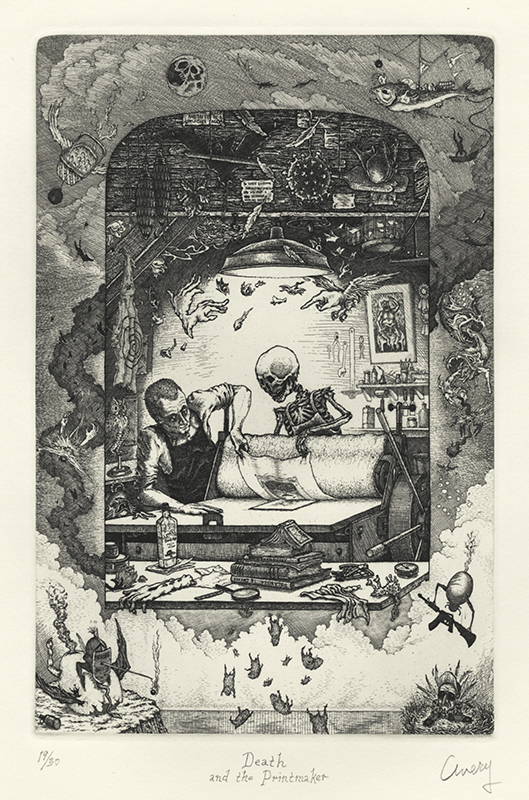
19th, 20th & 21st Century Fine Prints
707-546-7352 · fax 707-546-7924 · web: www.annexgalleries.com · email: artannex@aol.com
Death and the Printmaker by David Avery

Death and the Printmaker
David Avery
Death and the Printmaker
David Avery
1952 - PRESENT (biography)David Avery on his print Death and the Printmaker: "During our extended shelter in place situation, I could not help but wonder how hundreds of thousands of people could disappear without seeming to leave a noticeable impact on our daily lives. Death during this pandemic seemed anonymous. This led me to reflect on the imagery from Hans Holbein’s series of woodcuts, "The Dance of Death, in which humans from all walks of life were confronted with mortality, illustrating a time when the American tradition of sweeping the reality of death under the carpet would not have been possible. As Walter Benjamin pointed out, in the Middle Ages it was not possible to have lived in a house in which someone had not died, even in every room! The combination of sheltering in place and confronting (well, to some extent anyway) my own mortality in this context led me to the creation of the etching, Death and the Printmaker.
While I wouldn’t consider this to be a “self” portrait, those who might have visited my studio would probably recognize some of the items in the print. Among them would be a large etching from student days of a laughing demon sitting on a skull, an empty bottle of “Dad’s Hat” rye, and snippets of quotations from H.P. Lovecraft and Paul Scheerbart. The books reference Holbien’s Dance of Death, Della Bella’s The Five Deaths, and Krzhizhanovsky, who’s assessment of Kant was that perhaps shadows could cast things as well as things casting shadows. The other phantasmagoria depicted flitting around can perhaps also be found in my studio, but generally I am the only one who notices them. The marginalia surrounding the refuge of the studio depicts our current state of “reality” through grotesqueries inspired by those of Hieronymous Bosch.
